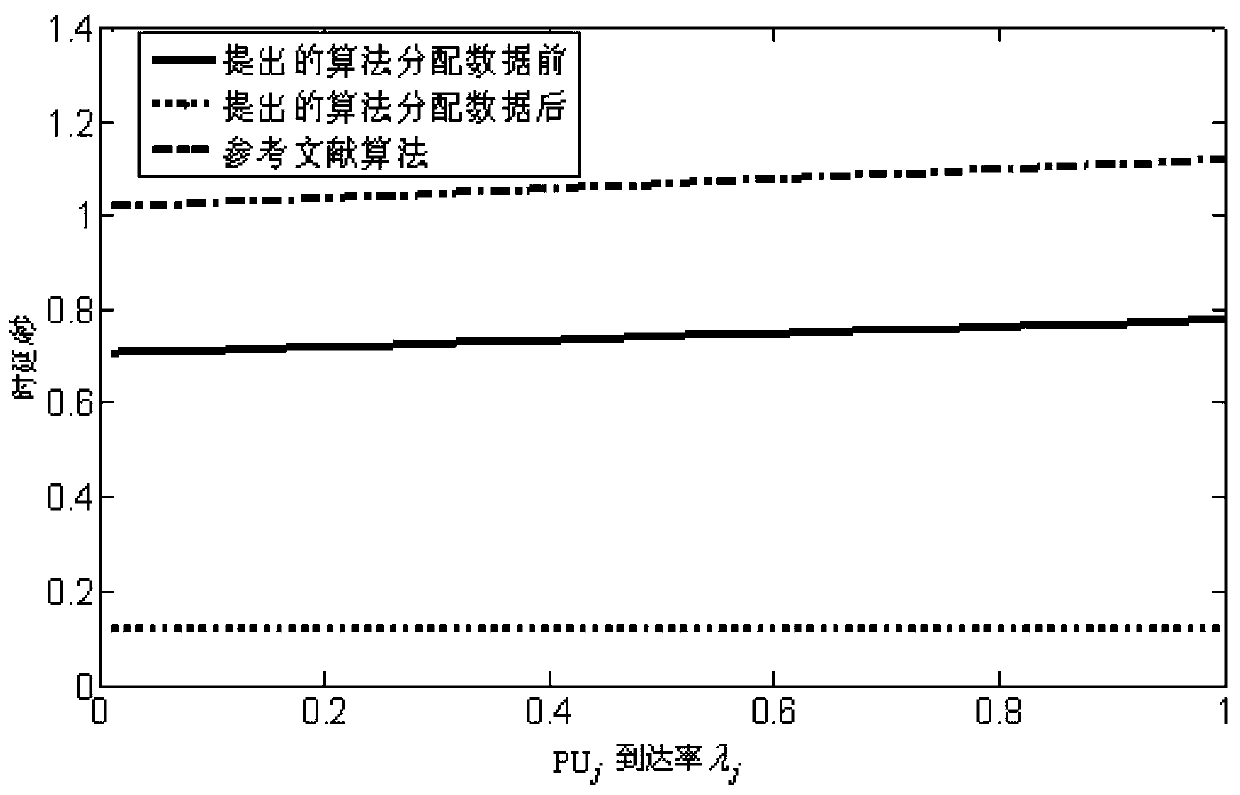A Cognitive Heterogeneous Network Joint Resource Allocation Method Based on Convex Optimization Method
A technology for cognitive heterogeneous network and resource allocation, applied in electrical components, wireless communication, etc., can solve the problem of not taking into account the different probabilities of primary users
- Summary
- Abstract
- Description
- Claims
- Application Information
AI Technical Summary
Problems solved by technology
Method used
Image
Examples
specific Embodiment approach 1
[0020] Specific implementation mode 1: A method for joint resource allocation of cognitive heterogeneous networks based on a convex optimization method in this implementation mode is specifically prepared according to the following steps:
[0021] Step 1. Assume that the HWCN has been integrated, and the SU can access all RATs, so the SU can access multiple heterogeneous networks with idle spectrum resources during the end-to-end communication process; assuming that the arrival process of the PU obeys the Poisson distribution process , the arrival rate λ j ; Assuming that the PU service time is constant; in the case of M (M ≥ 1) cognitive users, construct an end-to-end system model of cognitive heterogeneous network according to the constraints, and determine the optimization goal to minimize the system communication delay Among them, t i means SU i Data transfer via Multi-RAT D i The total time required, t ij means SU i via RAT j Time to send data, i=1, 2,..., M, j=1, ...
specific Embodiment approach 2
[0029] Specific implementation mode two: the difference between this implementation mode and specific implementation mode one is: in step one, the determined optimization goal is to minimize the system communication delay t in ij The specific derivation process is:
[0030] (1) Setting the objective function The constraints are: in the limited cognitive user power Limited optimized RAT bandwidth and SU i Data transfer via RAT D ij and is a fixed value D i :
[0031]
[0032] Among them, B ij , P ij ,D ij ≥0, i≤1, 2,..., M, j=1, 2,..., N;
[0033] (2) Let β ij means SU i Access to RAT j The bandwidth utilization ratio of the channel, then by Shannon formula, the capacity of each channel C ij for:
[0034]
[0035] In formula (17), N 0 Indicates the noise power spectral density, C ij means SU i Access to RAT j channel capacity;
[0036] (3) will SU i with SUj When communicating, PU j The delay caused by sending out the communication request is den...
specific Embodiment approach 3
[0042] Specific embodiment 3: The difference between this embodiment and specific embodiment 1 or 2 is that in step 2, in a given SU i via RAT j amount of data transferred case, the constraints are RAT j Limited amount of available bandwidth B j and SU i The limited amount of available power P j , to verify the objective function The concave-convexity of the objective function simplifies f 1 (B, P), the proof function f 1 (B, P) is a convex function and the specific process is:
[0043] (1) Prove the concavity and convexity of f(B, D, P):
[0044]
[0045] To verify the objective function Concave-convexity, simplify the objective function to f(B, D, P), where B is B in the objective function ij The simplification of , that is, the bandwidth allocated by the RAT to the SU communication, D is the D in the objective function ij Simplification of , which means the amount of data transmitted by SU through RAT; P is P in the objective function ij A simplification o...
PUM
 Login to View More
Login to View More Abstract
Description
Claims
Application Information
 Login to View More
Login to View More - R&D
- Intellectual Property
- Life Sciences
- Materials
- Tech Scout
- Unparalleled Data Quality
- Higher Quality Content
- 60% Fewer Hallucinations
Browse by: Latest US Patents, China's latest patents, Technical Efficacy Thesaurus, Application Domain, Technology Topic, Popular Technical Reports.
© 2025 PatSnap. All rights reserved.Legal|Privacy policy|Modern Slavery Act Transparency Statement|Sitemap|About US| Contact US: help@patsnap.com



